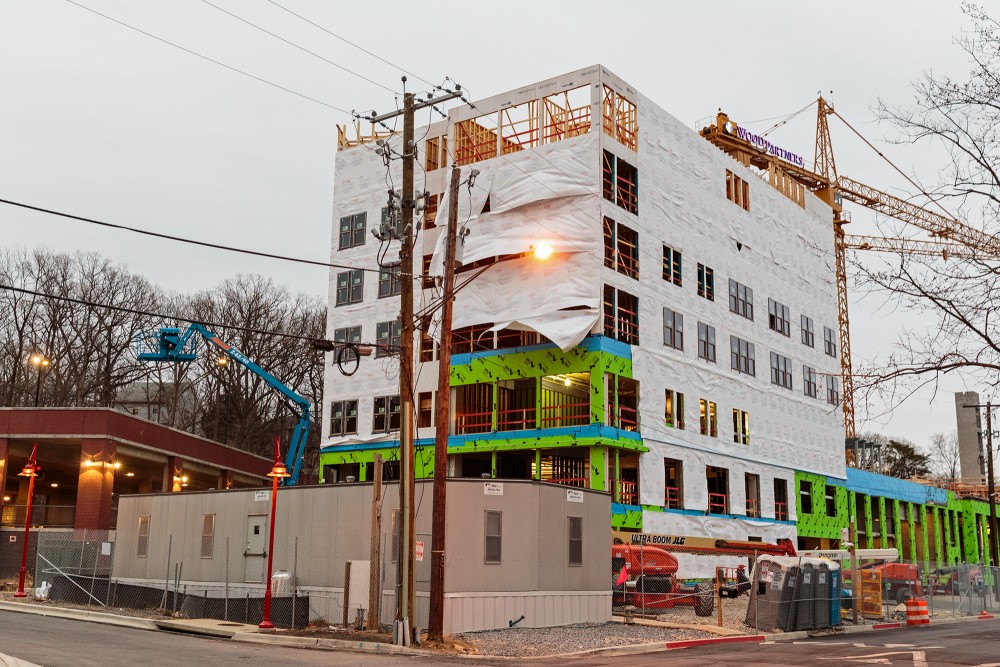Views expressed in opinion columns are the author’s own.
The meteoric rise and fall of Fuse 47 has been one long stream of 6 a.m. construction outside my window. Its premature death by fire created some suspicion and urban legends among neighbors, but otherwise this luxury high-rise apartment project hasn’t contributed anything to the neighborhood. And I don’t think its replacement will once completed, either.
[Read more: A year after the Fuse 47 fire, a new apartment complex is being built in its place]
College Park needs more housing to grow in the way it aspires to, but it’s spreading itself thin. Students struggle to secure affordable housing near the university while families living in this city struggle with its youth-dominated culture; now, College Park wants to pull in young urban professionals with flashy, amenity-rich apartments and a rapidly gentrifying landscape. Often, much of this city’s construction is focused on serving people who aren’t here yet at the expense of the populations that are.
A recent housing market survey by the University of Maryland Department of Resident Life showed that despite all the new apartment buildings springing up in the city, most underclassmen at this university still live on the campus. The infrastructure of this city fails to meet student needs, and, at the same time, dorm conditions are so inadequate that about half of students strike out in trying to find off-campus housing for sophomore year.
And still, the successor to Fuse 47, now called Alloy by Alta, aspires to be the “most modern and sophisticated apartment living offered in College Park,” according to its project director. But who asked for more high-end dwellings down the street from the “luxury” trappings of The Hotel, the University View “loaded with upgrades” and the nearly $1,000 rent of The Varsity?
Numerous pressing issues fragment this city’s communities, such as lack of food security, dilapidated and uncared-for properties and archaic zoning laws that prohibit more than five unrelated people living in a house, keeping nontraditional families and cohorts of students from grouping up to reduce the rising cost of renting. Resurrecting the Fuse 47 project wastes valuable space and reveals misguided priorities. It’s another effigy of wealth in a city where, according to the 2016 American Community Survey, more than a fourth of residents live below the poverty line.
It’s unfortunate, but it looks like residents must effect change themselves before the city prices them out. There are budding efforts to be optimistic about.
[Read more: Prince George’s County Fire Department responds to fire at Fuse 47 apartment complex]
The cooperative housing project at this university, known as CHUM, brings affordable housing and grocery systems to a city that desperately needs them. The organization grew from the efforts of students and has come to support undergraduate and graduate students, university employees and urban professionals within an intentional community. It’s a group of 40 people figuring things out for themselves, but CHUM is a much more sincere effort at addressing College Park’s housing problems than anything city or university officials have recently come up with.
As our city becomes more glass than brick, it’s up to residents to support each other through less formal systems. College Park has set its course for gentrification, and Alloy by Alta is only another image of the unattainable for financially burdened college students and city residents. We can only hope it’s at least interesting enough to be haunted.
Sona Chaudhary, opinion editor, is a sophomore English and geology major. She can be reached at sonachaud@gmail.com.



